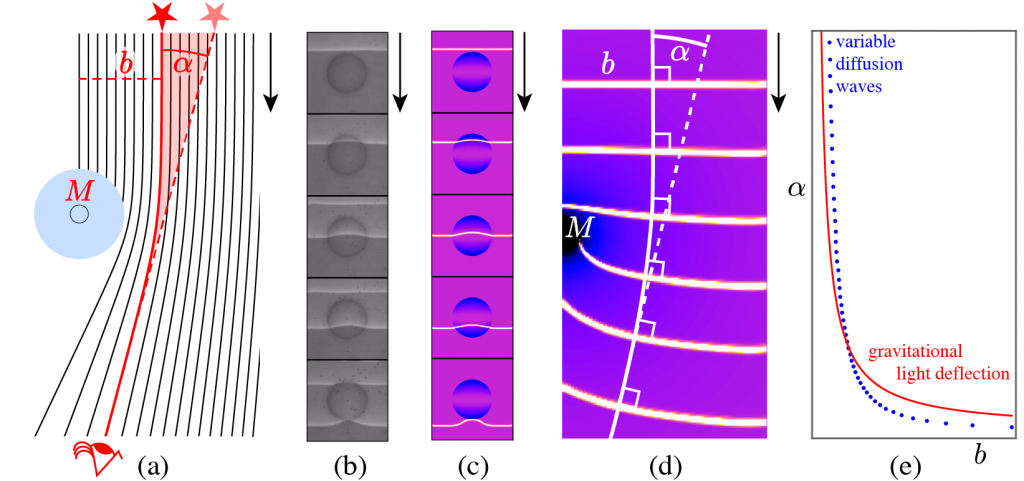I hired Kiyomi from Hawai’i for our NSF REU summer program in spring 2020 amidst fears of the pandemic that eventually postponed the program two years. When she finally arrived in summer 2022, I had already retired from Wooster, where my last year was completely remote, classes via Teams, but several of those included Daniel. Despite the pandemic, I was fortunate to collaborate with both Daniel and Kiyomi — as well as colleagues in Chemical Physics, Physics, Astrophysics, and Computer Science — on an article just published in Frontiers in Physics. Based on Daniel’s senior thesis and Kiyomi’s summer research, the article is the very-Wooster, very-interdisciplinary Chemistry Does General Relativity: Reaction-Diffusion Waves Can Model Gravitational Lensing.
Gravitational lensing is a general relativistic (GR) phenomenon where a massive object redirects light, deflecting, magnifying, and sometimes multiplying its source. In the research, we used the chemistry of Belousov-Zhabotinsky (BΖ) reaction-diffusion (RD) waves to model this astronomical effect in a table-top experiment. We began by experimentally passing BΖ RD waves through non-planar quasi-two-dimensional molds. We next reproduced the waveforms in computer simulations of planar RD waves with variable diffusion. We then varied the diffusion parameter so the effective wave speed of planar waves matched the GR predictions for light deflection near a massive object. We thereby recovered Einstein’s famous light deflection formula, as summarized by the figure below.


Thanks, Mark! I enjoy reading your posts as well.